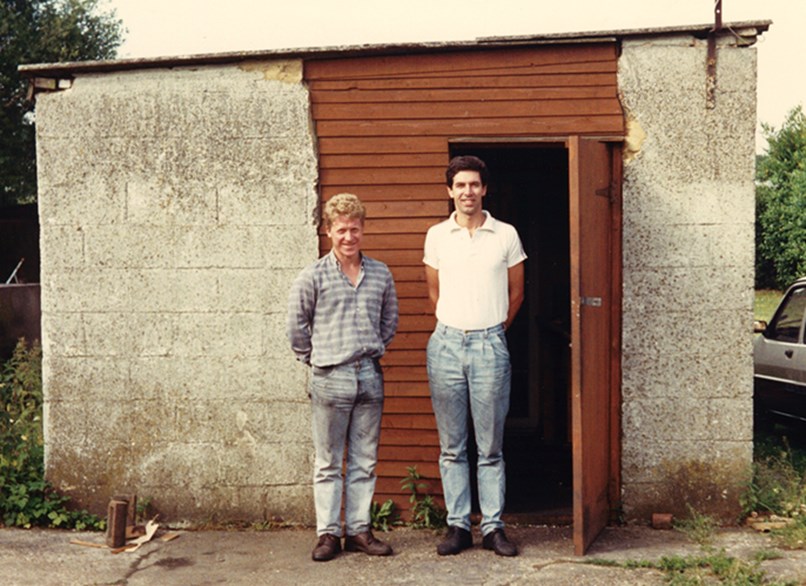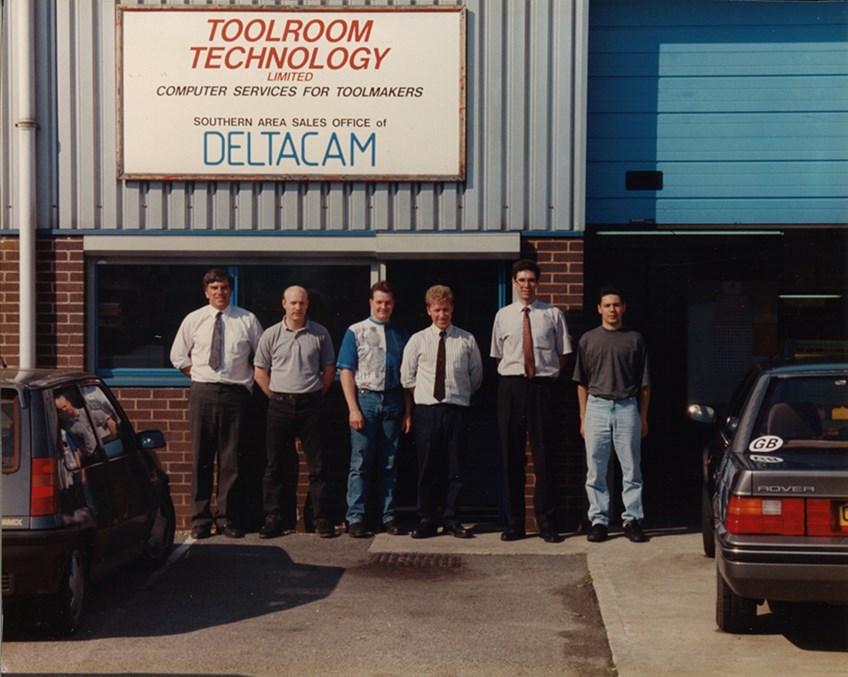The history of TTL...
In the spring of 1987 three friends, Graham (Ben) Dix, Paul Walton and Simon Lee, all CAD CAM application specialists, joined forces to start up a new business named Toolroom Technology Ltd. (“TTL”).

Having previously all worked together for a company that got into financial difficulty, they decided to set up the company “on a shoestring”. They were determined to run a tight ship with strict financial control, good customer service and honesty. For the first 18 months while the business was becoming established, overheads were kept to a minimum and the business operated out of an old shed in Ben’s garden.
The first company investment was a new, small Bridgeport milling machine which was shoehorned into the 15 square metre shed. Sharing an old computer, Paul and Simon worked on sub-contract bureau programming and machining for the local toolmaking industry. As specialists in 3-dimensional surface modelling CAD/CAM and the CNC machining of complex components, the demand for such new technologies began to increase in the 1980s.
To demonstrate their knowledge and expertise in a growing market, TTL exhibited at various trade shows and events, and that’s where they were introduced to Rolls-Royce. It was at a trade show in 1989 when a representative from Rolls-Royce approached TTL with a particularly difficult, somewhat intractable machining problem and to their delight, TTL were able to solve it. Over the ensuing months, the relationship with Rolls-Royce started to develop, and after a short period, Paul Walton devoted his time to developing an automated solution for the company for the machining of aero-engine components.
The concept of “adapting” geometry to suit the requirements of individual components was based on some work which Paul had done a couple of years previously on geometry variation in forging dies. The first fully automated “Adaptive” application was the machining of mid-span shrouds (or “snubbers”) on Stage 1 low-pressure compressor blades from Rolls-Royces RC62B engine. Whilst the company’s more routine work was being continued by Simon and the company’s first employee (Nick Rolls), Paul developed the software and machining routines for the supply of an automated turnkey solution for Rolls-Royce including the supply of computer hardware, fixtures, tooling and two Bridgeport CNC Vertical Machining Centres. This very first system was delivered to Rolls-Royce Bristol in 1990 and installed in “No. 3 Shop”, their compressor blade machining facility.

Over the years the relationship with Rolls-Royce grew, including taking on a significant order for the supply of all of the Adaptive Machining technology for their new £40m Turbine Blade Facility (TBF) in Derby. It was the biggest PO won by the company and remained so for some years.
Another significant project was for Chromalloy Thailand for the repair of HP compressor blades, TTL’s first ever export order. Today, over 70% of TTL’s revenue is generated from export business.
Since the first order with Rolls-Royce in 1989, TTL has developed and deployed over 100 Adaptive Technology systems.
TTL continues to grow and now works with most of the major players in the Aviation and Industrial Gas Turbine markets, providing technology for both the MRO (maintenance repair and overhaul) and OEM new part manufacturing sectors. Wider adoption of the technology persists in other industry segments such as Medical, Automotive and Oil and Gas for example, where our expertise and value added services in state-of-the-art CAD, CAM and CNC is in high demand.
The success of TTL, isn’t just down to the technology alone, it also lies with its employees, some of which have served over 20 years with the company. With the combined knowledge and expertise of well over 200 years in manufacturing and software it makes TTL the experts of Adaptive Technology that they are today.